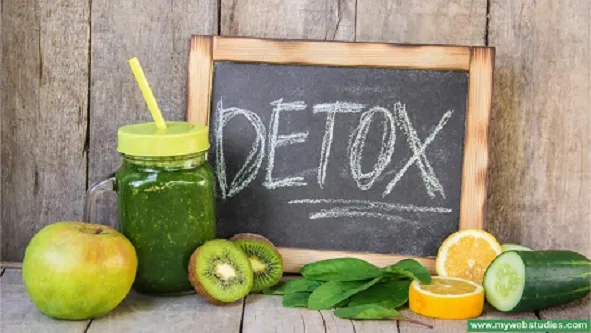Transcription Nutrients in the detox diet
In nutrition, there are two general classifications for dividing nutrients: macronutrients and micronutrients. This criterion responds to the amount of them that we find in the food we consume and the proportion we need to make our organism work properly.
Macronutrients, in turn, include 3 types of nutrients: proteins, carbohydrates and lipids or fats; while the group of micronutrients is composed of vitamins and minerals. The amount of macronutrients and micronutrients to be consumed will depend on the diet you follow and its purpose.
In this lesson you will learn about the properties of these nutrients and some recommendations on their inclusion in a detox plan.
Macronutrients
Macronutrients are compounds whose function is to provide energy to the body, participate in the repair and construction of structures in the organism, in the regulation of metabolic processes and stimulate growth.
As mentioned above, the substances that make up this group are proteins, carbohydrates and fats.
Proteins
Proteins are complex molecules that play a fundamental role in the correct functioning of the organism. Their structure responds to the union of amino acids that are released and absorbed in the intestine once digestion takes place. The sequence of amino acids that come together to form a protein determines its structure and function.
Some of the bodily functions that proteins fulfill are:
- They participate in the formation and repair of body tissues.
- They act as enzymes carrying out chemical reactions that occur in cells.
- They act as antibodies protecting the organism.
- They provide structure and support to cells.
- They participate in the digestion of nutrients and in the process of elimination of toxic substances.
Proteins are also divided into those of animal and vegetable origin. The former can be found in foods such as eggs, dairy products, meat and fish; they are considered to be of high nutritional value as they contain a greater amount of essential amino acids than vegetable proteins. Vegetable proteins, on the other hand, as their name indicates, come from foods such as seeds, nuts, legumes and cereals.
However, although they have a higher quality protein nutritional contribution, animal proteins should not be included in a detox diet, because the fats contained in the foods from which they are obtained can obstruct the circulatory system and slow down the detoxification goals pursued by this diet. The best solution to integrate proteins to your detox plan is to obtain them from foods such as soy or soy derivatives.
Carbohydrates
Carbohydrates, also known as glucides, carbohydrates or saccharides, are another of the macronutrients we will talk about in this lesson. They are the main source of energy for the organism and their nutritional contributions are fundamental for the correct functioning of the central nervous system.
This macronutrient has two classifications that divide them into simple and compound. The first group, simple carbohydrates, also known as sugars, are found naturally in foods such as fruits, honey and sugar, although humans also consume large quantities of them through the intake of sweets, sodas and industrial pastries.
On the other hand, compound carbohydrates have a higher nutritional value and are found in foods such as vegetables, whole grains and legumes. In general, and also applicable to the effects of the detox diet, it is advisable to obtain most of the carbohydrates from complex sources due to their high nutritional value, and because simple carbohydrates can be harmful to human health.
Fats
Fats or lipids are also an important source of energy for the body and are necessary for the absorption of a group of fat-soluble vitamins, such as those of type A, D, E and K.
Fats, like carbohydrates, are classified into different groups: saturated, monounsaturated and polyunsaturated. The first are the most harmful to human health and are frequently found in foods such as meat, common oils, fried foods and dairy products. The second group, monounsaturated fats, are more advisable to include in a healthy diet and are found in foods such as avocado, olive oil and nuts. Finally, like the previous ones, polyunsaturated fats are highly suggested to include in an eating plan for their great nutritional properties, and are located in foods such as fish, seeds and some nuts.
For the purposes of a detox diet, the total elimination of processed products containing saturated fats is recommended and it is suggested to opt for foods with monounsaturated and polyunsaturated fats.
Micronutrients
Micronutrients are those nutrients that the human body needs in small amounts to function properly. They, like macronutrients, play an essential role in maintaining good health and general well-being.
Micronutrients are divided into two major groups: vitamins and minerals. Vitamins are essential organic compounds that our body needs to function efficiently. Most vitamins cannot be produced by themselves in the body and must therefore be obtained from the food we eat. Minerals, on the other hand, are essential inorganic elements found in the soil and in some foods. They are also necessary to keep our bodies healthy and functioning properly.
Vitamins are divided into two main categories: fat-soluble and water-soluble vitamins. Fat-soluble vitamins, such as vitamins A, D, E and K, dissolve in fat and are stored in the body's fat cells. Water-soluble vitamins, such as vitamins C and B complex, dissolve in water and are not stored in the body; any excess is eliminated through urine.
Minerals can be divided into two categories: macrominerals and microminerals. Macro minerals, such as calcium, phosphorus, magnesium, sodium, potassium and chloride, are needed in greater amounts than microminerals, which include iron, zinc, copper, selenium, iodine, manganese and fluoride.
Each type of vitamin and mineral has different benefits and functions in our body. For example, vitamin A is essential for eye, skin and immune system health, while calcium is important for the health of our bones. Vitamin C is essential for the health of our skin, teeth and gums, and it also helps our body absorb iron from food.
It is important to get enough micronutrients in our diet to keep our body healthy. This can be achieved through a balanced diet that includes a variety of nutritious foods. Foods rich in vitamins and minerals include green leafy vegetables, fruits, nuts and seeds, meats, dairy products and whole grains.
However, when you want to start a detox plan, it is important to be clear about which foods we should extract the vitamins and minerals we need. For example, dairy products, the consumption of animal protein from meats and the intake of juices and sugary yogurts should be avoided.
In this lesson we can conclude that both macronutrients and micronutrients are essential to keep our body healthy, but that both the selection and quantity of these to be included in our detox diet must be examined to achieve the detoxification and weight loss goals that are pursued.
nutrients




